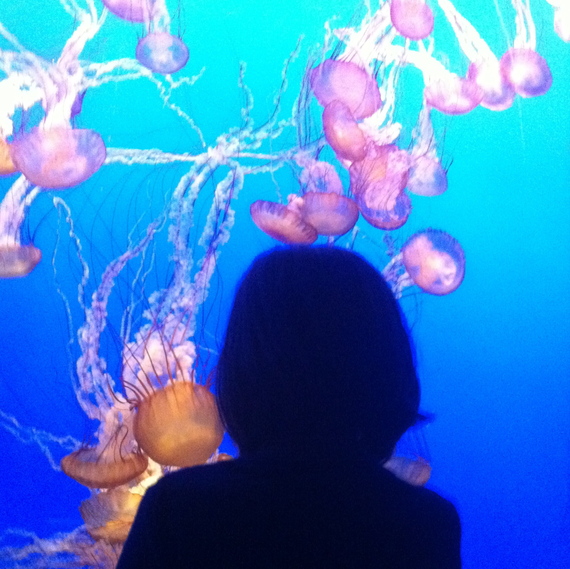Sitting in a restaurant recently, I overheard my son say something to his young child. And I knew it wasn't going to work out well for them. It wasn't serious. Just that stuff we parents do all day long, subtly manipulating our kids to get them to do what we want because it's important to us or convenient.
My son trusts me, so I caught his eye and kind of motioned with my head. He stopped everything, took a breath, and said, "I got it!" In the flash of an insight, he understood the impact on his child. And we both knew he wouldn't do it again.
The incident reminded me of something I read when I was pregnant with my first son - that disciplining a child can be as simple as a look.
Not the look that says, "Gee, not again," or "Can't you do anything right?" But rather, the look that inspires children to correct themselves.
How do we make that happen?
Understand the need for attention.
Our babies need our focused attention. And they learn quickly that they can get it by crying or screaming. In fact, it's the first lesson we all learn in life: "If I just lie here quietly, I might get ignored. But if I act unhappy, I'll get attention!"
Life's full for everyone. But if our kids learn early that "positive behavior gets me ignored," they'll do whatever it takes to get a response from us. They might even develop a belief that negative behavior is their purpose. They might even end up as adults, still acting unhappy to get attention!
So from day one, it's our job to teach our kids how to get the love and attention they need through supportive actions. And we do that best by rewarding their positive behavior with acknowledgement and approval - always making our love bigger than any other emotion we express to them - while giving our most low-key response to whatever we don't want them to repeat.
Explain the reasons for the rules.
Teaching our children what does and doesn't work effectively in life means also helping them understand why. For example, wrong can be "anything that produces a result that is harmful." And right can be "anything that is beneficial."
Kids will follow rules that they believe are in their best interest. So more important than simply showing our disapproval is teaching them how to recognize what's effective and what's not.
If our children reach a point where what they did is no longer what they want to do - and they've become a person who wouldn't choose to do it again, because the unsupportive behavior doesn't fit anymore - they've corrected their own behavior.
Separate what they do from who they are.
Our children constantly hear, through society, media, teachers and peers, that their worth depends on succeeding at whatever they do. They get a message that making the most money, having the coolest house and car, looking the prettiest, and being the smartest is what makes them valuable.
Our job as parents is to help our children discover who they are and what's really valuable. Then they can figure out for themselves what behavior supports that. And the good news is that children, who know that they're more than what they do, are more likely to hold healthy opinions of themselves.
Demonstrate cause and effect.
Consequences are great natural teachers - that actions create results, and that energy set in motion comes back around. By experiencing the results they create and by understanding the cause-effect connection, our children will learn to make decisions based on how they want life to unfold. And teaching them how to think, rather than telling them what they should think, will help them choose supportive behavior as a lifestyle.
When I tucked my sons in bed at night, we reviewed the day - what went well and why, and what might've worked better and how. We named the actions that led to consequences we liked, we explored better alternatives for actions that didn't work, and we committed to new behavior.
The goal of discipline is more than changing our children's behavior. The goal is to help them choose a different attitude - by seeing how they set things in motion and how they cause results.
Choose a good mood.
Anger doesn't make discipline work. Trying to train children's behavior through force doesn't work. And punishment teaches guilt and resentment - not better behavior.
So it's our job to fix our moods first, before we discipline - because we bring out the best in our children by expressing the best in ourselves.
Give them a safe place.
There are times when my most important success factor is my ability to get to the end of a super-challenging day, and when I finally fall into bed, to still be able to feel good about myself.
The same can be true for our children. So one of the best things we can teach them is how to comfort themselves back into feeling good, no matter what's happening around them.
After the incident with my son in the restaurant, he told me that he got the daddy-insight simply from the look I gave him. So I think the look that inspires children to correct themselves is the look of love.
We want our children to know that we love them, no matter what they do. And we want them to feel safe, no matter how crazy life is in any moment. And that's the purpose of disciplining - giving our children the tools to feel safe and loved, no matter what.
This post was originally featured on the author's blog: gracederond.com
